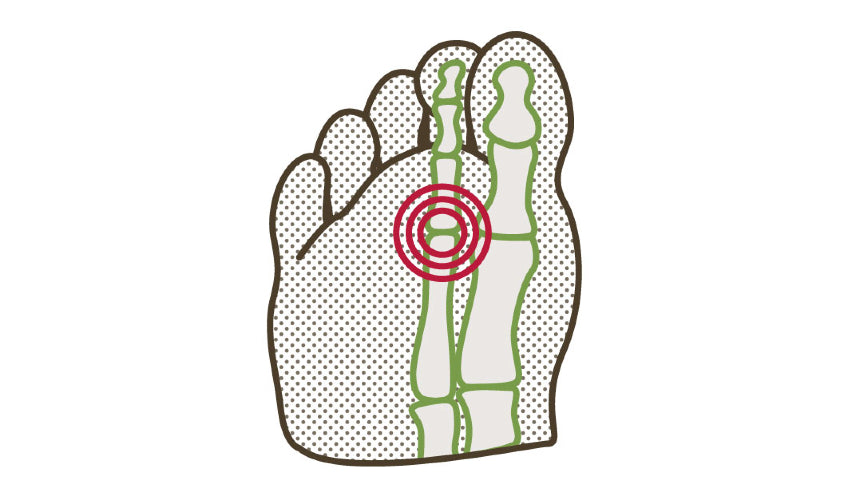
A very special thank you to Dr. Ray McClanahan, the inventor of Correct Toes, for sharing his valuable clinical expertise, insight, and wisdom in the preparation of this article.
What Is Capsulitis?
Capsulitis: Inflammation of a joint capsule.
Ligaments surround joints, including the toe joints, and help form joint capsules. Joint capsules help protect the joints and allow them to function properly. Capsulitis—inflammation of a joint capsule—is a common problem in certain parts of the body, especially the shoulders and feet, and it may cause significant discomfort. This health problem can, over time, lead to toe dislocation if it’s not treated properly. In fact, capsulitis is sometimes called pre-dislocation syndrome. Capsulitis occurs in people of all ages.
Capsulitis—Areas of the Foot Affected

Certain parts of the foot may be more likely to develop capsulitis than others.
-
Metatarsal Capsulitis: Some of the most common joint capsules to experience this ligamentous inflammation are the ones surrounding the metatarsophalangeal (MTP) joints at the ball of the foot. Each foot has five MTP joints that connect the toe bones, or phalanges, with their corresponding metatarsal bones—long, thin bones located in the middle third of the foot.
-
Capsulitis of the Second Toe: The most common MTP joint capsule to develop capsulitis is the one that connects the second metatarsal bone with the second set of phalanges. Problems with this capsule, especially inflammation, are particularly common because of the excessive pressure placed on this joint during weight-bearing activities. Capsulitis may be difficult to diagnose because of the tendency for other structures in the forefoot to also become inflamed.
Let's take a look at the various signs and symptoms that are characteristic of capsulitis.
Capsulitis Signs & Symptoms

Common signs and symptoms associated with capsulitis include:
- Pain in the ball of the foot
- The sensation of walking on a stone
- Swelling around the involved joint capsule
- Redness of the skin overlying the affected joint
Painful calluses may form in some cases if capsulitis becomes a chronic health problem. A person who develops calluses may feel as though the callus has a core or seed inside of it. These calluses are commonly misdiagnosed as plantar warts, and they can occur under any of the metatarsal heads.
Capsulitis-related calluses usually respond to Pedag metatarsal pads as well as cutouts. Cutouts are an orthotic technique that allows the more prominent metatarsal head—the structure most commonly affected by capsulitis—to drop lower than the other metatarsal bones. This action helps balance the weight-bearing load and temporarily decreases pressure on the ball of the foot.
SHOP PEDAG METATARSAL PADS
Some people with this condition also experience nerve symptoms caused by swelling. Bursitis—inflammation of fluid-filled sacs located in the forefoot—is another health problem that may be associated with capsulitis or misdiagnosed as capsulitis.
The Underlying Cause of Capsulitis

Capsulitis occurs when the fibrous capsule surrounding an MTP joint becomes irritated or inflamed. This happens when the forefoot fat pad is literally dragged away from its protective location under the heads of the metatarsal bones by chronically extended toes (the result of rigid toe spring built into conventional footwear), leaving the capsule vulnerable to the forces of bodyweight.
Thus, it is conventional footwear (in all its many forms) that is the primary cause of capsulitis. And it's not just the rigid toe spring that appears in most shoes, boots, and sandals that's the issue; toe box taper is another problematic design element found in most footwear that contributes to capsulitis. Tapering toe boxes force the big toe toward the second toe, putting the big toe out of alignment with its corresponding metatarsal bone and destabilizing the main foot arch.
Conventional footwear, then, creates aberrant, or unusual, foot mechanics that involve excessive weight-bearing on the ball of the foot, beneath the affected toe joint. The following factors—many of them associated with long-term conventional footwear use—may increase a person’s likelihood of developing capsulitis:
- An unstable foot arch
- Extreme bunion deformity
- Tight calf muscles on the involved side
- A second toe that is longer than the first toe
- An imbalance between the muscles and tendons on the top and bottom of the foot (extensors and flexors, respectively)
With the true underlying cause of capsulitis now a known, what can be done to address or prevent this painful foot problem?
Capsulitis Foot Treatment
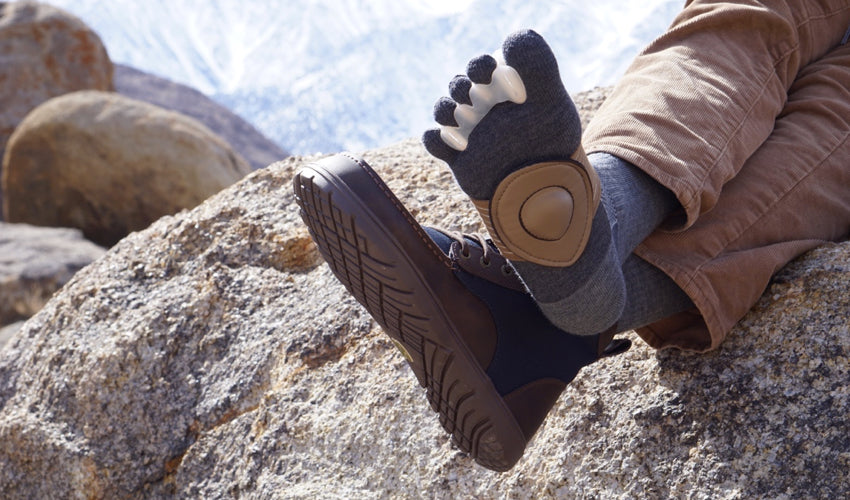
Capsulitis often responds to conservative, non-surgical treatments. This condition is best treated in its early stages to help improve the affected joint’s stability, reduce pain and other symptoms, and resolve the root cause of the problem.
Here are some of the most helpful natural treatment approaches for capsulitis:
- Adopt foot-healthy footwear
- Use an appropriate metatarsal pad
- Wear Correct Toes toe spacers
- Perform key exercises and stretches
- Take a break from weight-bearing activity
- Practice taping or splinting techniques
- Use anti-inflammatory agents and/or nutritional supplements
- Seek additional therapeutic modalities
Let's take a look at each of these natural treatment approaches in more detail below.
1. The Best Shoes for Capsulitis

Avoiding offending footwear and adopting more foot-healthy models is one of the most important approaches in combating capsulitis. Wearing shoes with a completely flat sole from heel to toe and a sufficiently wide toe box to allow for natural toe splay will help take focal pressure off the ball of the foot and enable natural arch support. All men’s and women’s footwear featured on the Natural Footgear site includes the above-mentioned design features and creates the kind of environment for the foot that helps heal the injured joint capsule.
SHOP MEN'S SHOES SHOP WOMEN'S SHOES
Best Running Shoes for Capsulitis

The benefits of wearing athletic shoes with a zero drop platform and anatomical toe box are particularly relevant to runners or those who take part in other athletic activities and who suffer from capsulitis. A perfectly level sole minimizes the amount of pressure on the forefoot, and a wide toe box (i.e., a toe box that is widest at the ends of the toes, not just wide at the ball of the foot) helps encourage proper toe alignment and distributes bodyweight across the entire forefoot area.
SHOP MEN'S ATHLETIC SHOES SHOP WOMEN'S ATHLETIC SHOES
2. Capsulitis Foot Pads

Wearable metatarsal pads (pictured above) or Pedag metatarsal pads can help reduce capsulitis foot pain and return the forefoot fat pad to its intended (and protective) location beneath the metatarsal heads. Key factors to consider when selecting a metatarsal pad for this task include the height, density, size, and placement of the pad. A well-placed and appropriately-sized metatarsal pad functions to raise, support, and offload the joint capsule to allow it to heal and recover. On the other hand, improper placement of the metatarsal pad, or an ill-sized metatarsal pad, could inflame or aggravate the joint capsule and prevent healing.
SHOP PEDAG METATARSAL PADS
3. Toe Spacers for Capsulitis

Correct Toes is another helpful treatment tool to reduce capsulitis foot pain, as it encourages the proper alignment of relevant forefoot structures and helps distribute bodyweight more evenly across the forefoot. Correct Toes toe spacers can be used in conjunction with foot-shaped footwear while weight-bearing to improve foot stability and promote the healing of injured tissues through improved foot circulation.
SHOP CORRECT TOES
4. Capsulitis Foot Exercises & Stretches

Gentle stretching is important for those who have tight calf muscles and/or a foot or toe flexor/extensor tendon imbalance—two seemingly independent problems that often go hand-in-hand with a capsulitis diagnosis. For the former, a simple (slow and controlled) heel-lowering exercise can be useful in lengthening out contracted posterior lower leg muscles. For the latter, for the foot or toe flexor/extensor tendon imbalance, the Toe Extensor Stretch (pictured above) may be a particularly helpful exercise in addressing capsulitis.
5. Rest from Weight-Bearing Activity

Though it can be difficult to achieve, given the need in our everyday lives to be on our feet and on the move, reducing weight-bearing activities and resting the affected foot can help control symptoms (especially swelling) in most people with capsulitis. This is a particularly helpful strategy for runners or athletes who do a lot of jumping in their sport. If you spend a lot of time on your feet at work and this is causing an aggravation of your symptoms, it might be necessary (if possible) to take some time off or request a work modification until your affected joint capsule has had a chance to heal.
Significant swelling in the ball of the foot may be indicative of a plantar plate tear—a problem that can sometimes be mistaken for capsulitis. A trained healthcare professional can perform what's called the Lachman test (aka toggle test) to evaluate for hypermobility in the associated joint and to determine the true underlying cause of the excessive swelling.
6. Capsulitis Taping or Splinting

Taping or splinting can help realign the involved toe, prevent the affected toe from drifting, and control capsulitis-related pain. Taping, when performed properly, is a natural treatment approach that can work, but the tape itself can be hard to keep on, and it can be difficult to duplicate the same amount of pressure with each new application. Many foot care providers find that elastic therapeutic tape (aka Kinesio Tape, Kinesiology Tape, KT Tape etc.) is the most effective kind of tape for addressing capsulitis. This special kind of tape is composed of an elastic cotton strip with an acrylic adhesive backing.
7. Capsulitis Foot Pain Relief

Certain anti-inflammatory agents or nutritional supplements may help reduce pain and swelling in the ball of the foot. A foot care professional will be able to tell you which substances are most appropriate for your particular situation, as well as the optimal dosage and delivery method for foot pain relief.
Non-steroidal anti-inflammatory drugs (NSAIDs) are commonly prescribed for foot pain relief in conventional podiatry clinics, however, NSAIDs can mask pain and give a false sense of confidence that the problem has been resolved, which in turn allows the user to injure themselves further. This may be particularly true among athletes who use NSAIDs.
Shifting gears a bit, though once favored as a helpful strategy in addressing capsulitis (and many other foot problems), using ice to numb the affected area and blunt foot pain is no longer accepted as a viable treatment approach, and many foot doctors no longer prescribe ice, except in cases of severe foot pain.
8. Additional Therapies for Capsulitis

Ultrasound is one physical therapy modality that may be helpful in treating capsulitis, especially when it's combined with the other interventions mentioned above. Ultrasound can be used to break up scar tissue and increase blood flow into the injured joint capsule, which is necessary for the capsule to heal.
If, for some reason, all the above strategies fail to produce a beneficial healing effect on the injured joint capsule, some people may consider regenerative injection therapies, such as prolotherapy, platelet-rich plasma (PRP) therapy, or stem cell therapy. Extracorporeal shock wave therapy (ESWT)—a noninvasive treatment that involves delivering shock waves to injured soft tissue to reduce pain and promote healing—may also be helpful in some cases.
What About Surgery & Cortisone Injections?

Capsulitis, if treated using conservative measures, will usually heal over time, and surgery is not typically recommended (or necessary) for this foot health problem.
Likewise, cortisone—a steroid hormone—is not recommended for capsulitis. Cortisone is, after all, a catabolic hormone, which means that it breaks down tissue (as opposed to an anabolic hormone that builds tissue). While cortisone does reduce capsulitis-related inflammation, it also breaks down the joint capsule itself, resulting in long-term damage to this important foot structure.
Does Capsulitis Go Away?

Capsulitis symptoms usually respond well to the natural, noninvasive, and nonsurgical treatment methods outlined in this article, and a full recovery is possible for most. As always, and as with any other health problem, it's important for you to consult your physician before starting any treatment plan that seeks to address capsulitis. Ask your foot doctor what approaches will best serve you and your specific foot care needs.
Do you have any questions about capsulitis? Join the discussion below this article.
 In this video, Dr. Ray McClanahan, a sports podiatrist at Northwest Foot and Ankle and the inventor of Correct Toes, discusses the underlying causes of ball of foot pain and gives special attention to the condition called capsulitis—an inflammation or irritation of the fibrous capsules surrounding the metatarsophalangeal joints. This educational video also demonstrates how to treat capsulitis using natural, non-invasive methods and discusses some of the most common conventional...
Read more
In this video, Dr. Ray McClanahan, a sports podiatrist at Northwest Foot and Ankle and the inventor of Correct Toes, discusses the underlying causes of ball of foot pain and gives special attention to the condition called capsulitis—an inflammation or irritation of the fibrous capsules surrounding the metatarsophalangeal joints. This educational video also demonstrates how to treat capsulitis using natural, non-invasive methods and discusses some of the most common conventional...
Read more


















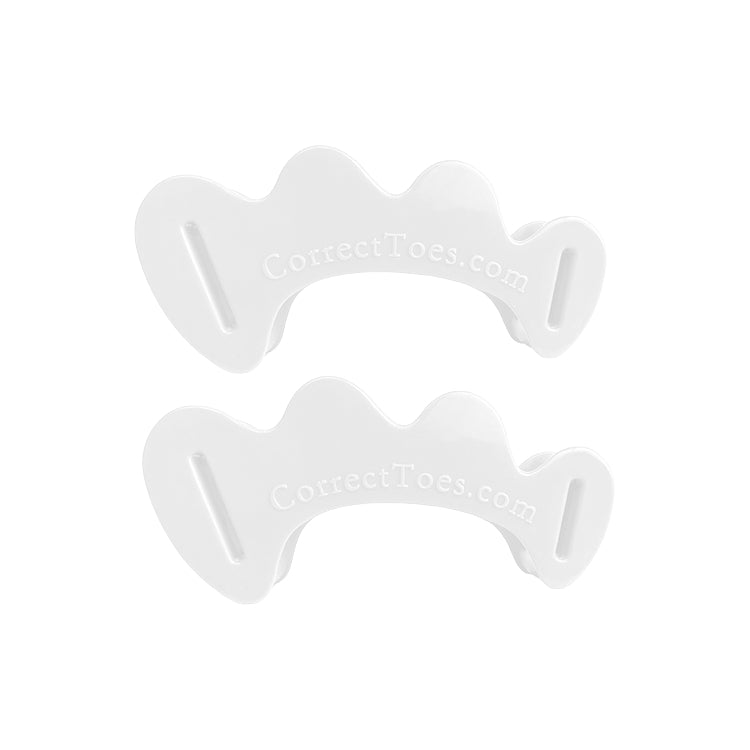
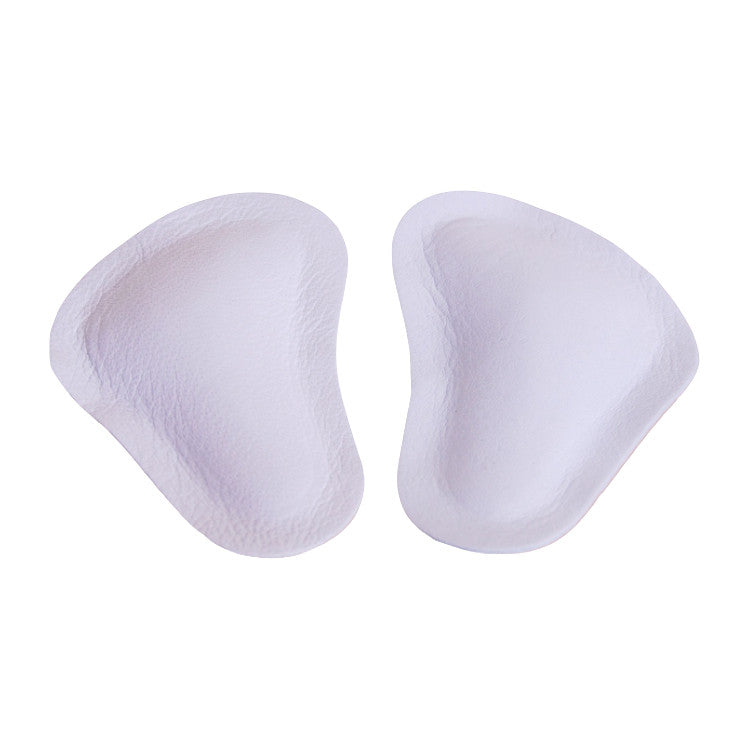
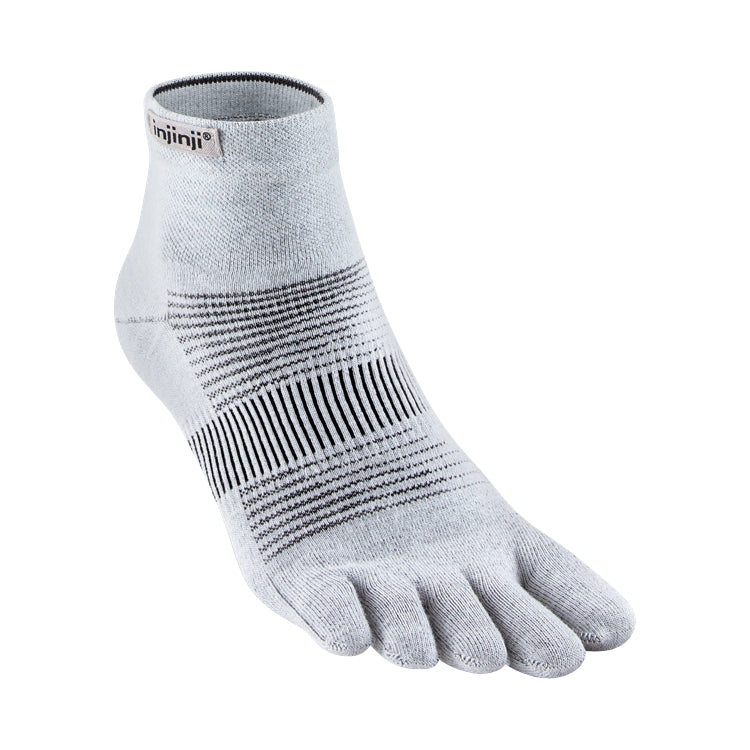
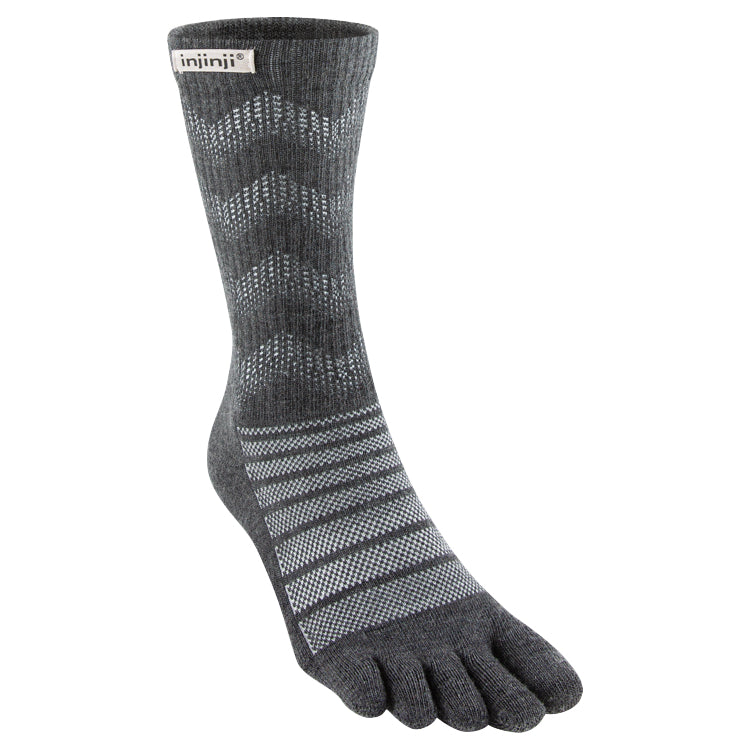
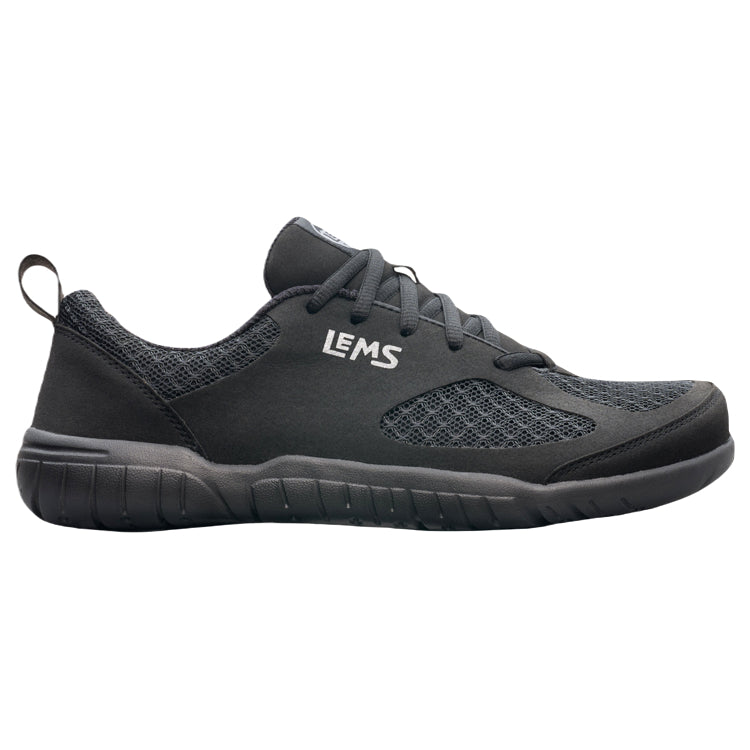
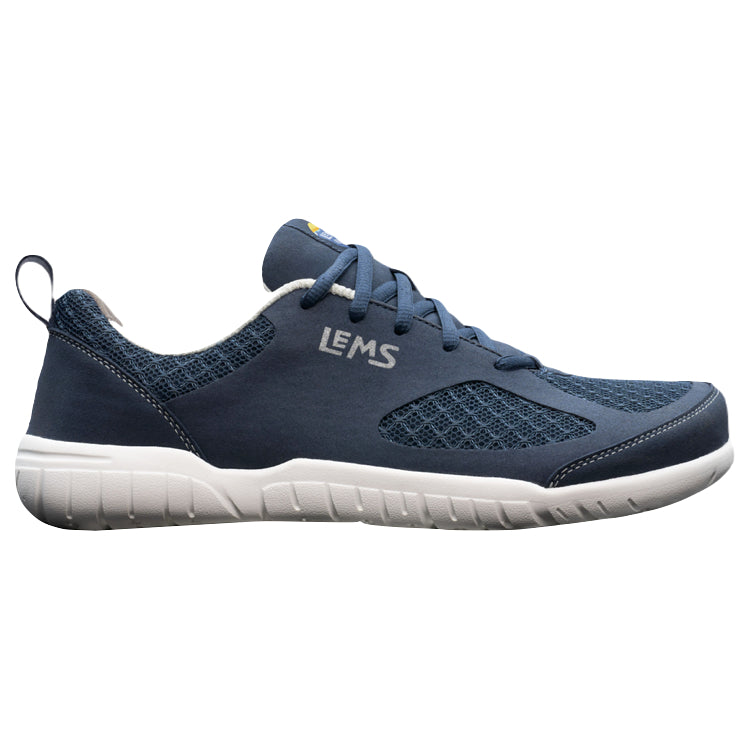
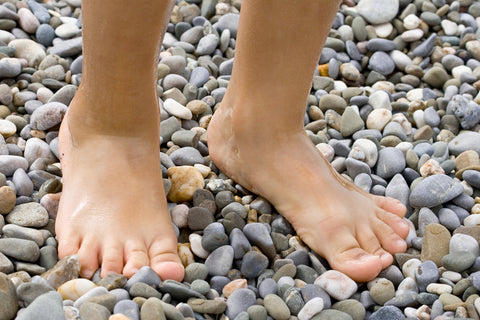

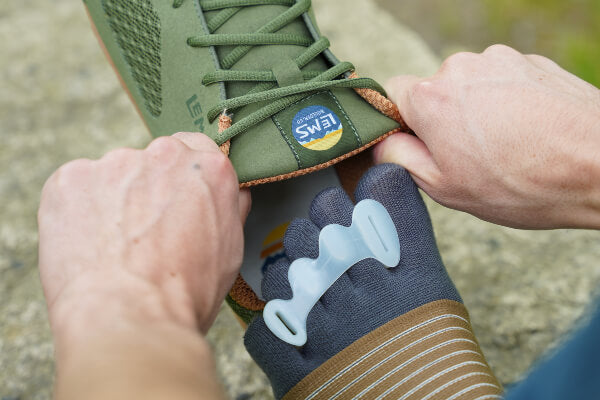
You mentioned orthotic cutouts but didn’t have a reference for any. Do you have a link or know of any products of this type? This site doesn’t seem to have them.
Hi, Sean,
Thank you for your question. At this time, we don’t have any recommendations for specific orthotic cutouts, but you might consider reaching out to a local foot care provider for this particular service and product. Most podiatrists or foot care providers will be able to assist you with this. To find a naturally-minded foot care expert, we put together this article that includes a number of key interview questions you might consider asking him or her:
www.naturalfootgear.com/blogs/popular-q-a/what-questions-should-i-be-asking-a-prospective-foot-care-provider
Please let us know if you have any additional questions!
All the best,
Marty Hughes, DC
How do I tape or splint to control capsulitis-related pain? Where can I get the kind of tape mentioned?
Hi, Stanley,
Thank you for your question! Taping to control capsulitis-related pain can be helpful, but many patients will, unfortunately, only experience limited improvement with this approach. In some cases, a Budin splint (taped around the arch) can be used to hold the affected toe(s) in plantarflexion. But in general, using foot-healthy footwear in combination with Correct Toes and metatarsal pads, as well as performing the Toe Extensor Stretch (www.naturalfootgear.com/blogs/educational-articles/toe-extensor-stretch), will be helpful in resolving many cases of capsulitis.
I hope this info helps!
All the best,
Robyn Hughes, ND
My foot specialist (an orthopedic foot surgeon) suggested that I use a stiff-soled and flat sandal or shoe (like Birkenstocks) with a metatarsal pad to heal my chronic second toe capsulitis. I also read info from online foot specialists and watched YouTube videos that recommended using stiff-soled footwear that doesn’t bend in addition to a soft insole and a metatarsal pad that’s modified to suit the foot suffering from second toe capsulitis. Why do you suggest Lems Primal 2 shoes, which are soft-soled and bend easily? I have suffered for the past 4 years with this problem. Interestingly, my second toe capsulitis symptoms developed exactly as detailed in your articles.
Greetings, Hiten,
Thank you for reaching out to us. I’m so sorry to hear about your ongoing battle with capsulitis; I hope you’re able to achieve some lasting relief very soon.
Stiff-soled shoes may be suitable for temporary immobilization of an inflamed 2nd metatarsophalangeal (MP) joint capsule, and they can help reduce symptoms, but they are not suitable for post-acute recovery rehabilitation. A foot problem such as capsulitis is often the combined result of foot weakness along with selective overloading of the plantar 2nd MP joint, so the long-term use of stiff-soled shoes will not address the foot’s fundamental need to become strong on its own. Also, most stiff-soled shoes have heel elevation as well as toe spring (otherwise tripping will occur), so in the resultant foot configuration, the 2nd MP joint is always in a dorsiflexed position.
Something else to bear in mind: Capsulitis of the 2nd MP joint is often related to a hammertoe, or to tight toe extensor tendons, so the Toe Extensor Stretch can be helpful for this issue:
www.naturalfootgear.com/blogs/educational-articles/toe-extensor-stretch
Metatarsal pads are also super helpful in bringing the toes back down to make good contact with the support surface (as well as getting the protective forefoot fat pad relocated under the 2nd MP joint).
So, the key here is to immobilize the affected joint capsule until symptoms abate, and then (slowly) begin to mobilize the joint using a natural foot position while monitoring your symptoms.
I hope you find this info helpful, Hiten!
All the best,
Robyn Hughes, ND
I think I have capsulitis. I have a pain in the ball of my foot when walking, and this leads to a shooting nerve pain in my second toe. I also have a strange pulsing in my foot at times, often when lying in bed. It doesn’t pulse like a heartbeat; more like a ripple along the base of my foot which repeats. What recommendations do you have for treatment, please?
Hi, Tina,
Thank you for your comment and question; I’m really sorry to hear about the ball of foot pain you’ve been experiencing. You’ll want to schedule an appointment with a local foot care provider to have your problem assessed properly. Once you have that diagnosis, you’ll be in a much better position to know how to proceed. Please feel free to follow up with any questions and we’ll do our best to answer them here.
Kind regards,
Robyn Hughes, ND
I did have capsulitis, but I’m happy to report that wearing Correct Toes and Lems shoes, along with using Pedag metatarsal pads, has given my feet a new lease on life. I’m so grateful that a friend told me about your website when I started having problems.
Hi, Gayle. Thank you for your message. That’s fantastic to hear! We’re glad that you found us too, and we wish you much continued success going forward.
Kind regards,
Robyn Hughes, ND
Hello! I have capsulitis of the second toe. I just ordered a single-toe spacer. Do you think this will be okay? Also, do you recommend Lems for this issue over other shoes? Thank you.
Hi, Amy,
Thank you for your questions. A single-toe spacer could indeed help with capsulitis of the second toe, depending on the design and materials of the spacer in question (in general, we prefer spacers, such as Correct Toes, that spread all the toes in an anatomical fashion). A good single-toe spacer should realign your toe and reduce pressure on the affected joint, which can provide relief. Lems shoes, with their wide toe box and flexible soles, might also be a good choice for you, as they help distribute pressure evenly over the footbed and allow your toes to spread naturally. In our experience, we’ve also found metatarsal pads to be helpful in addressing capsulitis. Of course, we always suggest consulting with a foot care professional to determine the best course of action for your unique situation.
Kind regards,
Robyn Hughes, ND
I have capsulitis (I think). It comes on after wearing barefoot shoes. I can wear barefoot running shoes for about nine months. At first, I’m fine, but gradually the pain builds up so that running is too painful, and walking or doing squats hurts too. I then have to wear more cushioned (though still wide toe box and zero-drop) running shoes for a few months for my feet to recover. I then go back to barefoot shoes, and the cycle starts again. Part of the problem is that I run a lot on stony paths. I really enjoy wearing barefoot shoes for all activities, so it is very frustrating when the pain gets too much to continue. I have some Pedag metatarsal pads, but I have yet to use them. Maybe they are the answer?
Hi, Mark,
I’m really sorry to hear you’re struggling with this pain. It sounds like a frustrating cycle, especially when you enjoy barefoot shoes. It’s great that you’ve identified the pattern, though, and are open to exploring different solutions, like the metatarsal pads. They may indeed help by relieving pressure on your forefoot and redistributing your body weight more evenly. You might also want to consider gradually transitioning back into barefoot shoes with more recovery time in between or using them for less intense activities like walking before attempting running again. Since stony paths can exacerbate the issue, cushioning or altering the surfaces you run on could help reduce stress on your feet. If you haven’t yet, you might also want to consult with a healthcare professional or coach who specializes in barefoot running—they could offer tailored advice or adjustments to your routine that might prevent the pain from recurring. I hope you find a way to keep enjoying barefoot shoes without the discomfort!
Kind regards,
Robyn Hughes, ND
I am just starting this journey, so I have many questions. That being said, I am an Army vet who first experienced foot pain from running 11 years ago. The VA in Des Moines got me into riding road bikes, and now I ride about 3,500 miles per year. But during the last two years, I’ve had problems with my feet, so I got wider Lake shoes with G8 insoles. I still have to take my shoes off for relief 30 miles in, though. I have many rides this year (MS150, Parkinson’s Benefit Ride, Red, White, and Blue Flag Ride, and RAGBRAI), and I need suggestions on shoes that I can clip into on my bike. Thank you.
Hi, Brad,
Thank you for your comment. And thank you for your service! It’s great to hear that you’re staying active with cycling! It sounds like foot discomfort during longer rides is still an issue for you, even with somewhat wider shoes and insoles. For clip-in shoes, you might want to look into a company called Strong Feet Athletics that makes a fantastic zero-drop, wide toe box road cycling shoe:
www.strongfeetathletics.com
You might also consider experimenting with footgear such as toe socks and metatarsal pads, which might help alleviate some of the discomfort you’ve been experiencing. Consider reducing ride intensity or frequency while you adjust. Best of luck with your upcoming rides!
All the best,
Robyn Hughes, ND
I was diagnosed with capsulitis of the third and fourth toes last summer (which healed after eight weeks). I was recently told that I got it again, and in the exact same place. I’m closing in on 14 weeks without any relief. The problem actually seems to be getting worse over the last two weeks after a slow improvement. And this is despite my walking being limited to one destination per day for an errand, if that. I found your video on why capsulitis occurs to be very helpful. But my foot doctor also wants me to wear a custom orthotic to address my severely flat foot. But while it helps with my arch, it seems to add to my capsulitis problem. Any suggestions? Also, how long do you recommend wearing toe spacers during the day or night to help speed up recovery?
Hi, Cheryl,
Thank you for reaching out. I’m sorry to hear that you’re still struggling with capsulitis. It’s unfortunate that the custom orthotic is exacerbating the issue. I recommend bringing this to the attention of your foot care provider, as it may be possible to find an alternative solution that addresses both your flat foot and capsulitis. In our experience, we’ve found that a combination of foot-healthy footwear, Correct Toes, and other beneficial footgear can be helpful for both of these foot health considerations, though every person is unique in terms of their feet and foot care needs.
To answer your question about toe spacers and how long to wear them to speed up recovery: You might consider wearing them for 1-2 hours at a time throughout the day and then gradually increasing the wear time as your feet adjust. Most people find they get the greatest benefit from Correct Toes by wearing the device while weight-bearing during the day.
All the best,
Robyn Hughes, ND
Thank you for the comprehensive article about capsulitis. It is very helpful. I have had capsulitis with fat pad displacement for two years. I developed it while primarily wearing Altra zero-drop shoes for 12 years. Go figure. My first podiatrist had me ditch the Altras, get rigid orthotics with a met pad, wear stability shoes (e.g., Brooks Ghost), and do physical therapy. A sports medicine doctor had me wear a rigid carbon plate for 6 weeks and do some electrotherapy. A gait specialist had me do many toe raises and other foot exercises all while my foot seemed to be getting worse. After realizing the traditional approaches were getting me nowhere and doing further research, I have worked my way back to zero-drop shoes with NO toe spring (Altra Escalante and Lems Primal Zen). I am also using Correct Toes plus either a Pedag met pad or a Barefoot Science insert.
I was also told to stay away from many flexion-oriented foot exercises that are not good for capsulitis and focus more on extension exercises. My problem now is that I am having difficulty wearing the Lems as the lack of cushioning irritates the area with capsular pain. I will also get irritation wearing the more cushioned Altra Escalante depending on how much I walk. I have a pair of Topo Phantoms that are the most cushioned and comfortable, but there was concern that they have too much toe spring. If I’m having a really bad day with pain, I wear the Topo anyway—toe spring or not. Do you have any thoughts about how to balance the pain with the shoes? Lastly, there are lots of foot exercises being offered up by many of the natural foot movement people, but some may not be appropriate depending on one’s condition. I would love to see someone develop exercise routines for specific foot pain conditions (e.g., capsulitis, neuromas, plantar fasciosis, etc.).
Hi, Michael. Thank you for your comment. You’ve clearly put a lot of thought into your recovery, and it’s understandable that balancing pain relief with footwear choices can be challenging. While minimizing toe spring is generally ideal, comfort and pain reduction should take priority—especially on difficult days. A cushioned shoe like the Topo Phantom can serve as a temporary tool while you continue to strengthen your feet and optimize mechanics. You might also experiment with additional footgear that addresses ball-of-foot pain (such as Strutz Pro foot pads) or strategic lacing to offload pressure from the affected area. As for exercises, you’re absolutely right—what works for one condition may exacerbate another. A more individualized approach, focusing on controlled progression and avoiding aggravating movements, is key. A skilled movement specialist with a natural foot health perspective could help tailor an approach specific to your needs. Keep listening to your body, as it usually provides the best guidance.